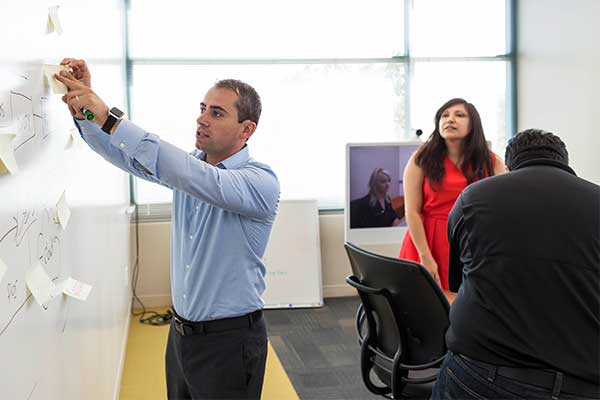Wanted: Innovative thinkers. Creative problem-solvers. Disruptive decision-makers. Makers. Shakers. Fire-starters. Brainstormers. Ideators.
In our fast-changing world, where digital continues to re-write the rulebook, employers are looking for more. They will want you to have the tech smarts as well as social skills and the interpersonal skills.
But increasingly, today’s recruiters, HR teams, managers and decision-makers – your next boss– are on the lookout for techies who can also: ideate.
What does ideate actually mean?
Well, if you do a Google search, you are likely to run into around 5.6 million hits for “ideation.”
According to Wikipedia, ideation is the “creative process” of creating, developing, and communicating new ideas. Furthermore, it comprises all the stages of thought cycle, from innovation to development, to actualization.
How does ideation translate for techies?
Well, as a techie, you are going to have to get to grips with the reality that ideation is likely to be one of the activities your employers will ask you to participate in. Especially when it comes to problem-solving.
It has never been a less fortuitous time to simply set about solving problems or overcoming challenges by joining the dots.
Creative problem-solving means looking at the bigger picture. Taking seemingly disparate ideas or concepts and bringing them together to resolve something using innovation. It means opening up to all kinds of different possibilities and thinking inside, outside and re-inventing the box.
Now, if you are a NetAcad student or graduate, chances are that you are already something of a problem-solver. But are you a creative thinker?
Below we have rounded up a number of techniques you can use to kick-start your creativity, crank up your critical thinking and increase your powers of ideation.
Five Ways to Ideate Like a Pro
Question Everything
Whatever your challenge, whatever the problem, wherever you are in your career, whatever your role... you should question the orthodoxy.
In your career you will usually encounter the “that is how we do things around here” attitude. But if you challenge the status quo, you usually end up taking off the blinders for not only yourself but for your boss, your team, and others you collaborate with. And opening up a realm of possibilities that can be converted into ideas, opportunities and solutions is very valuable.
Start by framing your challenge creatively. Come up with 20 assumptions you might be making about this challenge. Now look at these assumptions. Turn them on their head. Use them as spring boards to think up new ideas, new approaches. Ask the question: what if?
Make a Wish
Ideation is about thinking big. So make a wish. Yes, a wish. Got it? Now sit down with your team, your boss, or your colleagues and brainstorm a bunch of different ways to make that wish a reality. Start by making your wish tangible. And go crazy by all means. Let your imagination set the boundaries. Next, take a couple of these far-fetched wishes and use them to stimulate your ideas – come up with something a bit more realistic, but no less novel. Already you will have taken great strides from solving-by-numbers, and you will be opening up to new approaches.
Unblock the Creativity
A good technique as you are ideating – and one that can fuel the creative juices – is to link totally unrelated concepts. If you and your team are stuck in the idea development process, and you are starting to feel blocked, force yourself to find connections between seemingly disparate things.
Start by pairing the concepts, and they can be as far unrelated as these examples are: Food and rugs; shoes and lanterns; cats and coffee. Then brainstorm the potential link between them. What might it be? This process can unblock the creativity – and probably yield a little laughter along the way.
Reverse the Challenge
This is fun. Take your challenge and frame it. So it might look like this: How can I ensure that our corporate WiFi is always working and available to delegates at company conferences?
Then reverse it: How can I ensure that our WiFi never works for guests?
Now create a list of actions that address your reversed challenge. And bingo! Work through that list and get inspired to find solutions to each challenge that you have.
Worst Idea Ever
And if reversing the challenge seems like fun, try brainstorming the “worst idea” with your team. It is pretty simple: Ask everyone to create a list of bad, terrible, stupid, illegal, or gross ideas. This will have people laughing and engaged.
Once you have generated a list, challenge your colleagues to turn these horrible ideas into good ones by either considering their opposite, or by finding some aspect within a terrible idea that can be used to inspire a good one.
We encourage you to go ahead and try any of these ideation techniques tomorrow. See what comes up, it is bound to be inspiring.


![Career Skills for Techies [webinar series]](https://prelogin-authoring.netacad.com/sites/default/files/field/image/career_skills_for_techies-600x400.jpg)